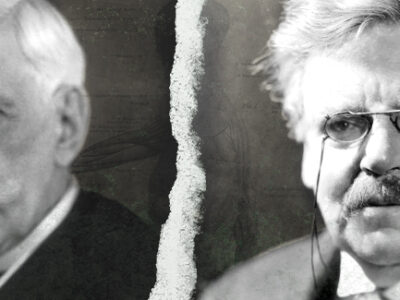
Obama Should Remember Reagan’s Resolve
Editor’s note: A version of this piece was written exclusively for USA Today shortly after the Libyan revolution in early 2011. Judge Bill Clark was President Reagan’s deputy secretary of state in 1981 and national security adviser from 1982-83, among other posts. Dr. Paul Kengor is co-author (with Pat Clark Doerner) of Clark’s biography, “The Judge: William P. Clark, Ronald Reagan’s Top Hand.”
Ronald Reagan clashed with Libya and its dictator Moammar Gadhafi for the first time over 30 years ago. The details of that encounter must be revisited—particularly President Reagan’s sense of resolve and clarity of purpose—as once again President Obama’s foreign policy grapples with the anti-American sentiment and attacks on U.S. diplomatic posts in the Middle East.
One of us (Clark) was there in Washington in the 1980s, serving as acting secretary of state, in the absence of Secretary of State Al Haig, when the news hit regarding Gadhafi’s latest antics. Clark was in constant communication with Reagan and Secretary of Defense Caspar Weinberger. All had been close friends, colleagues and confidants dating back to California in the 1960s, when Clark was Governor Reagan’s chief of staff.
The crux of the crisis was, as usual, Gadhafi himself. The location was the Gulf of Sidra, off the North African coast in the Mediterranean, an area of obvious strategic importance. Gadhafi had already persisted in making himself a nuisance to the civilized world. In the late 1970s, he issued a direct challenge to the United States.
Each year, the American Sixth Fleet conducted extensive naval exercises in these waters. This was acceptable action in international waters, appropriate maneuvers for battle-readiness, particularly for the nation that led NATO. U.S. actions went on without dispute or provocation. That changed when Gadhafi unilaterally extended Libya’s presence beyond its historic 12-mile coastal limit into a much wider swath that went 100-200 miles from Tripoli to Benghazi, deep into the Gulf of Sidra. He was attempting to establish it as a Libyan lake, off limits to America and the West.
The Carter administration chose not to challenge Gadhafi, rescheduling and relocating U.S. exercises, ordering the Navy to stay clear of Gadhafi’s muscle-flexing. In 1981, however, a new president and new team—new principals with new principles—came to Washington. Ronald Reagan made clear he would not let America be bullied. Reagan and Weinberger announced that exercises would take place, as scheduled, just outside Libya’s 12-mile coastal limit.
More than that, the Joint Chiefs of Staff established new rules of engagement for the U.S. fleet, which Reagan quickly approved. The rules stated that if U.S. forces were fired upon, they could fire back immediately, without seeking layers of approval. “Anytime we send an American anywhere in the world where he or she can be shot at,” declared Reagan, “they have the right to shoot back.”
Reagan went further. During a National Security Council briefing, the admiral in charge asked precisely how far U.S. aircraft would be permitted to retaliate against Libyan aircraft. Reagan answered: “All the way into their hangar,” into Libya itself.
Reagan understood that a bully continues bullying until he’s punched in the nose. That moment came with early morning exercises in August 1981, led by the USS Nimitz. The Libyan air force set course, with a large number of aircraft, including Soviet MiGs. After a series of confrontations, two Libyan fighter jets locked on two American F-14 Tomcats escorting our ships, firing air-to-air missiles. The American pilots wasted no time making good use of the Reagan-approved rules, firing back with heat-seeking missiles. No need remained to follow the Libyan jets all the way to their hangars; they went down in the Mediterranean.
This demonstration cooled off Gadhafi, though it did not end his mischief. He continued his terrorist activities, operating not defiantly in the open but covertly, pursuing an extensive hit list, including Clark as one of the principal targets. His killing of innocent civilians in countries deemed threats to his regime eventually prompted the Reagan administration to order U.S. aircraft to Libya in April 1986. Targets in Tripoli and Benghazi were of a military and personal nature. Some of the nearly 100 bombs delivered on Gadhafi’s homeland landed at Splendid Gate, Gadhafi’s barracks, injuring his family members. Gadhafi, sleeping in a tent outside the compound, barely missed injury but did receive a rude awakening.
Consistently, President Reagan held firm against protests from the international community, from France, and from American liberals insisting that the Gulf of Sidra would be another Gulf of Tonkin: “Vietnam” all over again.
President Obama has a terribly difficult job with the present crisis in Libya and throughout the Middle East. To be clear, we’re not advocating military action. We don’t want war. We believe the lessons of the Reagan years—and those immediately prior—speak for themselves, namely: The Middle East situation demands a sense of direction, clarity, and confident purpose. Uncertainty suggests weakness. The Washington rule stands the test of time: The principles never change—only the principals.




